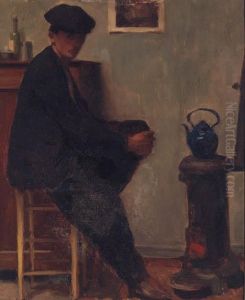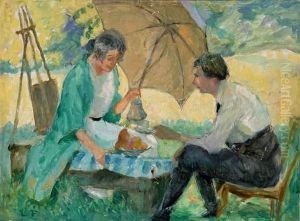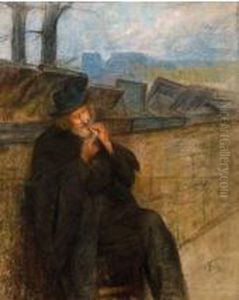Leon Pierre Felix Paintings
Léon Pierre Félix, not widely known in the landscape of prominent artists, was a French painter born in 1870, in the midst of a rapidly changing art world. His life and work were contemporaneous with the flourishing of Impressionism and the beginnings of Modernism, although he did not gain the same level of fame as some of his peers during this transformative period in art history.
Félix's work was primarily influenced by the Post-Impressionist movement, which was characterized by a focus on more structured forms, bolder colors, and greater symbolic content than the preceding Impressionist works. While there is limited information available on his upbringing and education, it is known that he was active during a period that saw the development of many new artistic styles and schools of thought in France and across Europe.
Throughout his career, Félix would have been exposed to the vibrant artistic scenes of Paris and other cultural centers. He would have had the opportunity to interact with, and be influenced by, the works of other artists of the time, possibly attending the same cafes and exhibitions as the likes of Cézanne, Gauguin, and Van Gogh. Despite this, Félix managed to carve out his own niche, producing works that combined elements of realism with the more expressive and emotive techniques that were coming to the fore in the early 20th century.
Léon Pierre Félix's artistry spanned several decades, during which he would have witnessed the impact of World War I on the European continent and the subsequent shifts in artistic expression that followed. The historical record of his works suggests that he was a devoted painter, though his recognition in art history is not as pronounced as some of his contemporaries. He passed away in 1940, leaving behind a body of work that contributes to the rich tapestry of French art history, encapsulating the stylistic transitions of his time.
Due to the relatively low profile of Félix compared to major artists of his era, in-depth biographical details, including pivotal moments in his life, influential connections, and critical reception, are sparse. Art historians may find his paintings in private collections or smaller museums, and his works may occasionally appear in auctions, presenting opportunities for further study and appreciation of his artistic contributions.


